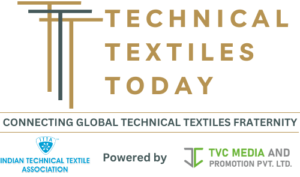The Indian textile industry is set for a positive turnaround with a combination of recent government policy changes and long-term strategic plans. The Ministry of Textiles has taken key steps to support the industry, particularly the Man-Made Fibre (MMF) segment.
Immediate Relief Measures:
- A minimum import price (MIP) of USD 3.5 per kg has been implemented on five specific categories of imported MMF knitted fabrics until September 15, 2024. This aims to provide immediate relief to domestic MMF businesses.
- Additionally, the Ministry has exempted inputs imported by specific entities like Advance Authorization holders, Export Oriented Units (EoUs), and Special Economic Zones (SEZs) from mandatory Quality Control Orders (QCOs). This reduces regulatory hurdles and eases access to raw materials.
Industry Growth Initiatives:
The Confederation of Indian Textile Industry (CITI) has welcomed these measures and believes they will spark expansion within the MMF sector. Looking ahead, CITI proposes further policy changes to enhance long-term growth:
- Focus on Improved Cotton Productivity: Encouragement for planting high-yielding, specialised cotton seed varieties like HTBt cotton to strengthen the cotton value chain.
- Facilitating Access to Raw Materials: Exempting fibres and yarns unavailable domestically from QCOs to ensure a smooth supply of essential materials.
- Streamlining QCOs: Extending the exemption on QCOs currently enjoyed by the Ministry of Textiles QCOs to similar inputs imported by Advance Authorization holders, EoUs, and SEZs (currently under the Department of Chemicals and Petrochemicals).
- Committee for Raw Material Availability: Establishing a dedicated committee to monitor the availability of all raw materials and identify specialised fibres or yarns that may require exemption from QCOs due to supply or price concerns.
- Competitive Raw Material Pricing: Ensuring a steady supply of all raw materials at internationally competitive prices.
- Lowering SION for Cotton Blends: Adjusting standard input and output norms (SION) for fabrics that blend cotton with MMF and Viscose Staple Fibre (VSF) to improve cost competitiveness.
Industry Optimism:
CITI Chairman, Mr Rakesh Mehra, believes these measures, combined with the existing capabilities of the Indian textile industry, can address current stagnation and propel growth, especially in promising sectors like technical textiles. By ensuring access to affordable raw materials and streamlining regulations, the industry can achieve its ambitious target of USD 350 billion by 2030.
